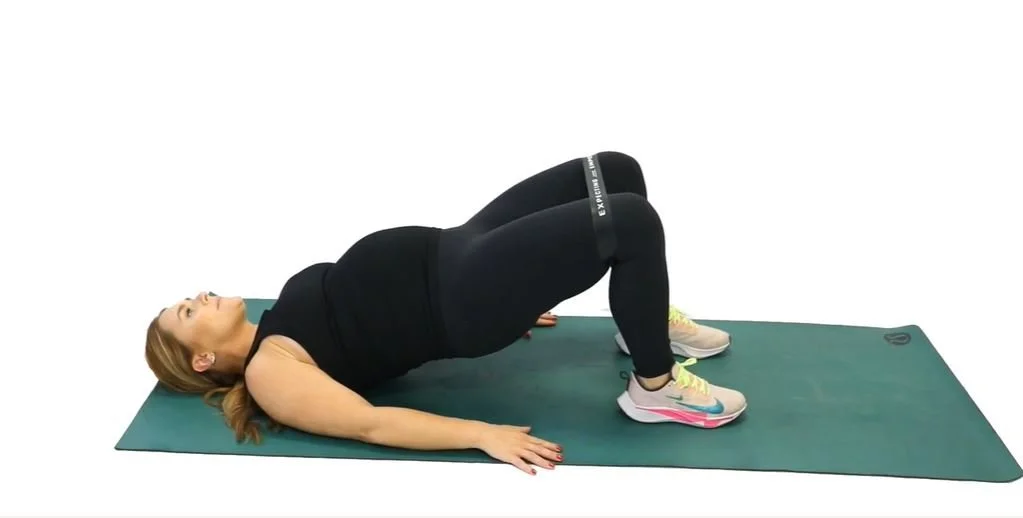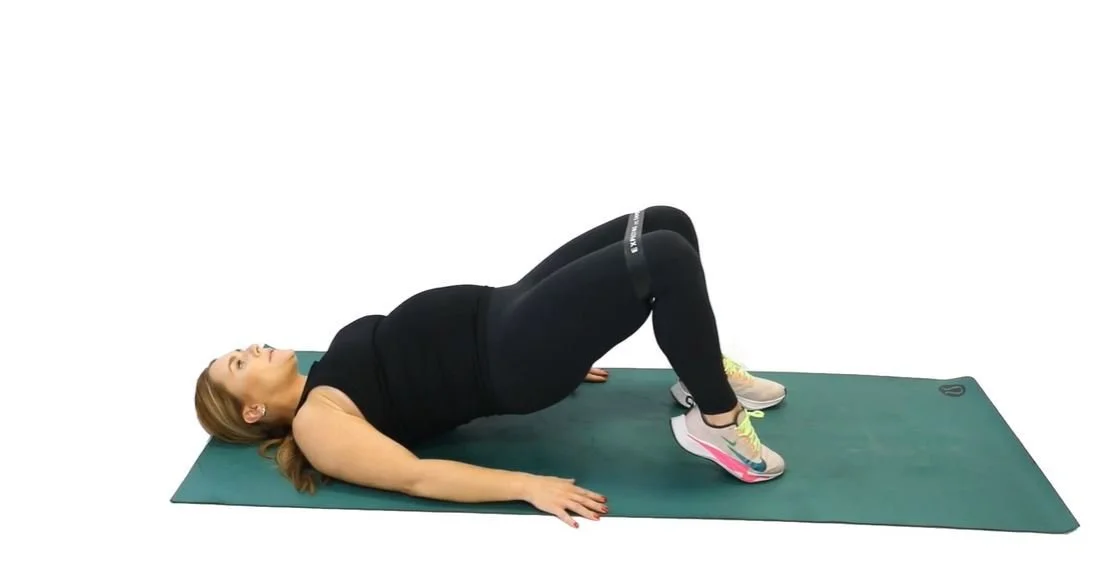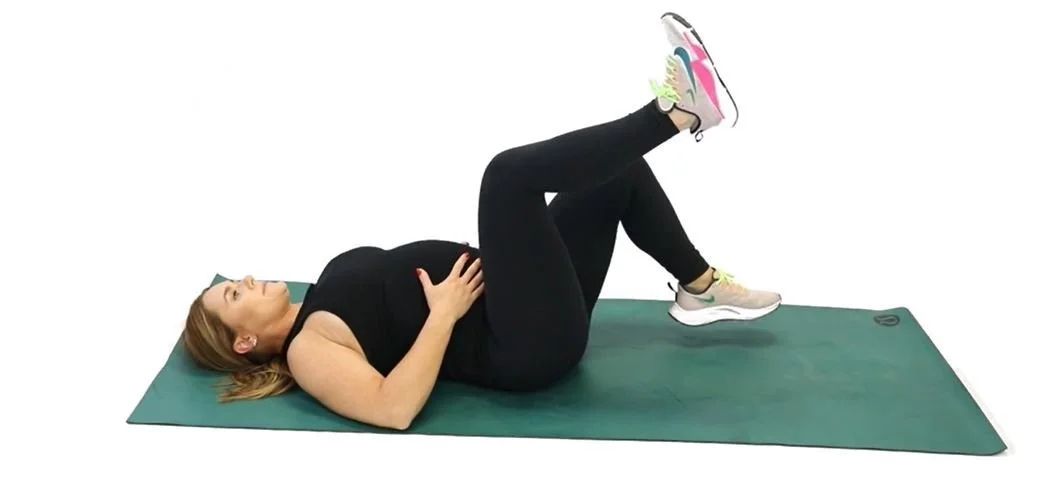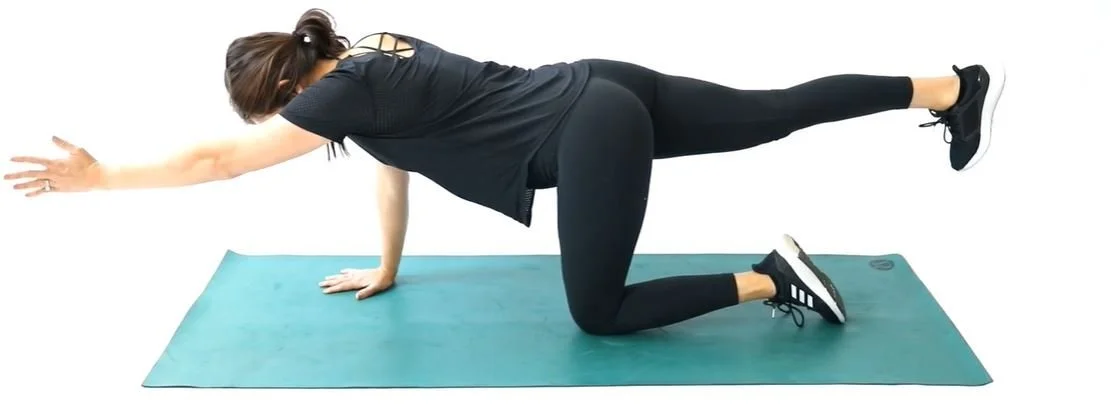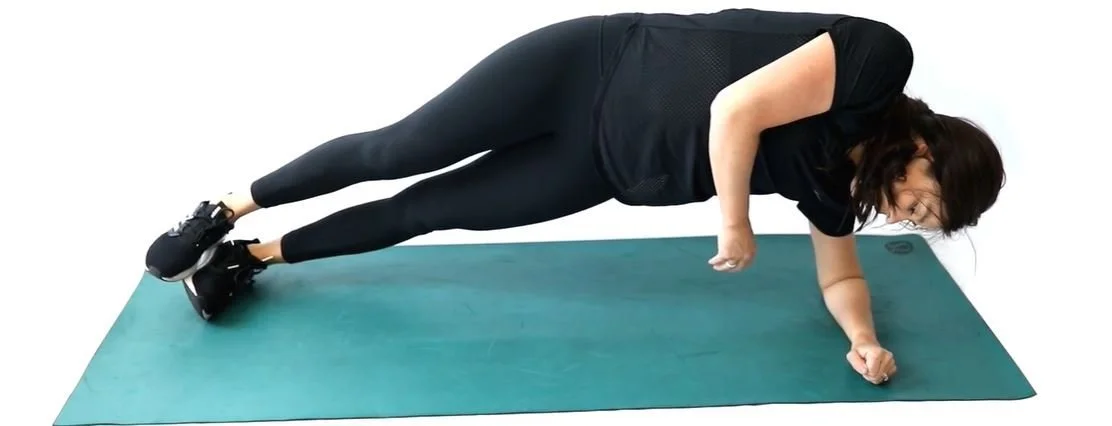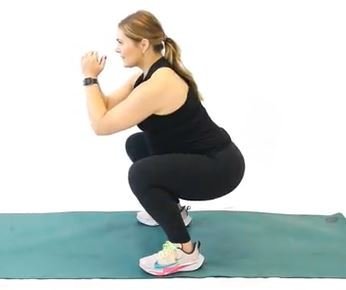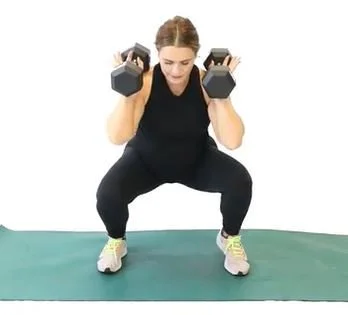Running With Diastasis Recti (DR)
Can I Run With Diastasis Recti?
For many new mamas, getting back into a running routine is a top priority. But your post-baby body comes with a long list of priorities — like healing your core and strengthening your pelvic floor — that need to come before running. This is especially true if you have diastasis recti (DR).
Here are all the details you need about what diastasis recti is, whether it’s safe to run with it, and what you need to do before you can lace up your favorite running shoes again.
What is diastasis recti?
Diastasis recti is when your rectus abdominis (aka your six pack abs) becomes separated at the midline of your belly.
It can technically happen to anyone — especially if you lift heavy weights or do dynamic movements without proper core activation — but it’s really common in pregnancy because the muscles become stretched and weakened as your uterus expands and your belly grows. In fact, research suggests that up to 60% of women experience DR during pregnancy or postpartum.
This separation can heal on its own — but for some women, it doesn’t. And when your abdominal muscles are separated, they can’t function properly. This can lead to posture changes and pelvic instability that ultimately lead to low back pain, pelvic pain, and pelvic floor dysfunction. It can also create the infamous “mom pooch.”
Is it safe to run with diastasis recti?
We don’t recommend that any new mamas — with or without diastasis recti — run until at least 12 weeks postpartum. That’s because pregnancy and childbirth weaken your abdominals and pelvic floor, which are responsible for stabilizing your pelvis and spine during movement. Instability during movement leaves you at risk for injury and pain. It can also prolong your abdominal healing postpartum.
If you have diastasis recti, it’s likely that you haven’t effectively strengthened your abdominals and pelvic floor since giving birth. So while you can start running again, you’ll want to follow a progressive running program (we have one in our app!) that helps you work your way back up to full-blown running.
That means you should focus on the following:
Diaphragmatic breathing. Your diaphragm and pelvic floor work together — and both play a major role in proper core function. This is step #1!
Fixing your alignment. Good posture is key to reducing pressure on your body and activating your core properly.
Strength training (your pelvic floor, hips, ankles, and abdominals). This checklist is an excellent reference point for what strength you’ll need before pounding the pavement.
Cardiovascular endurance. Low impact only: biking, walking, or swimming.
Once you’re feeling strong (and can pass that strength checklist), you can start introducing running back into your exercise routine.
How to run safely with diastasis recti
Slow and steady wins the race. That means running slower (no sprinting, please) and shorter distances (no marathons, either) than you did pre-pregnancy.
It also means perfecting your running form, focusing on deep core stability exercises, and constantly monitoring your DR symptoms. Then you can build your way up to harder, faster, and longer runs.
Perfect your running form
Running with improper running form puts a lot of extra pressure and/or force on your body, which puts you at risk for running-related injuries and common postpartum conditions like prolapse and stress incontinence. It can also worsen your DR.
To figure out if you have good form, start by having someone take a video of you while running. Here’s what it should look like:
The middle of your foot should hit the ground first — if you see a hard heel strike with your leg landing way out in front of you, you’re likely over-striding
You should be leaning forward with your body in a straight line (no flared ribs)
Your trunk should rotate slightly, with your arms swinging back and forth at 90 degrees
If your form isn’t up to par, don’t fret — there are things you can do to fix it:
To train your body to lean forward:
Wall running in place. Stand about 2-3 feet from a wall and lean forward from the ankles up (almost like you’re on skis) to place your fingertips high up on the wall. Get tall as if someone is pulling your high ponytail straight upwards, keeping your ribs tucked in. Staying leaned forward with your fingertips on the wall, run in place. Set a timer and perform for 30 seconds for 3-5 repetitions
Incline training on treadmill. If you have a treadmill, set your incline to 3 or 4. This will help train your body to run with a forward lean.
To fix heel strike:
Cadence training. Cadence training is essentially increasing your cadence (aka your step rate) while maintaining or reducing your speed. This helps prevent over-striding and reduces the impact on your body. Aim for a step rate of about 170 beats per minute (bpm), using a cadence app (like Wahoo Fitness or Run Cadence), a digital metronome, or by matching the beat of songs that are 170 bpm. Even increasing your rate by 5% can make meaningful differences!
Core exercises for diastasis recti
It might sound surprising, but exercises to heal your DR are straightforward. A small study found that classic abdominal moves like bridges with ball squeezes and side planks successfully improved DR symptoms and even increased running speed in postpartum women with DR.
But there’s a catch. All of these moves need to involve something called the “abdominal draw-in maneuver” (ADIM). ADIM is essentially contracting your transverse abdominis, which are your deepest core muscles.
Learn how to contract your transverse abdominis: Lie on the ground on your back with your legs on a chair at a 90-degree angle. As you exhale, make a “shhh” sound while drawing your tailbone towards your beltline. (It’s a very subtle muscle recruitment!)
To check if you’re doing it correctly, place both of your hands on the pointy part of your hip bones and bring your fingers one inch towards your belly button, and then one inch downward. The muscles in this area should be contracting.
Perform 10 10-second holds of this contraction once a day for a week, and then you can add on other abdominal exercises (while properly contracting your transverse abdominis!):
Side plank (picture doesn’t show this, but do it on your knees)
Monitor abdominal separation
Track your DR progress in a journal to make sure that your symptoms aren’t getting worse with running. If your abdominal separation increases, you might want to take a break from running to focus on strength (Psst: Our Postpartum Fitness Guide might do the trick).
How to check yourself for DR:
Lie on your back and place your fingers in the center of your belly, just above your belly button
Slowly lift your head until your shoulder blades are off of the ground
As your abs flex, use your fingers to check above and below the belly button:
How many fingers wide is the gap?
How deep is the gap? How far down can your hand go into the abdominal wall?
Where is the gap: high near your sternum, just near your belly button, or low near your pubic bone?
Summary
Yes, you can run and effectively heal your diastasis recti as long as you take it slow, focus on building solid core stability, and perfect your running form.
Make sure that you’re constantly monitoring your DR symptoms. If your abdominal separation gets worse or you have new or worsening back or pelvic pain, reach out to a physical therapist for a personalized, guided approach to healing your core and getting back to running.
And remember mama, don’t push your body before it's ready. A slow, safe reintroduction to fitness will benefit you in the long run (pun intended).
References:
Sperstad JB, Tennfjord MK, Hilde G, Ellström-Engh M, Bø K. Diastasis recti abdominis during pregnancy and 12 months after childbirth: prevalence, risk factors and report of lumbopelvic pain. Br J Sports Med. 2016;50(17):1092-1096. doi:10.1136/bjsports-2016-096065
Thabet AA, Alshehri MA. Efficacy of deep core stability exercise program in postpartum women with diastasis recti abdominis: a randomized controlled trial. J Musculoskelet Neuronal Interact. 2019;19(1):62-68.
Heiderscheit B, Chumanov E, Michalski M, et al. Effects of step rate manipulation on joint mechanics during running. Medicine & Science in Sports & Exercise. 2011;43(2):296-302. doi:10.1249/mss.0b013e3181ebedf4
Deering RE, Chumanov ES, Stiffler-Joachim MR, Heiderscheit BC. Exercise program reduces inter-recti distance in female runners up to 2 years postpartum. Journal of Women's Health Physical Therapy. 2020;44(1):9-18. doi:10.1097/jwh.0000000000000157



